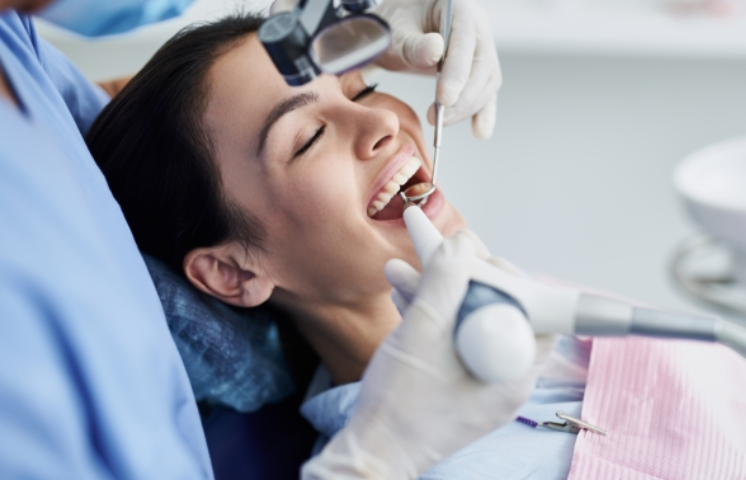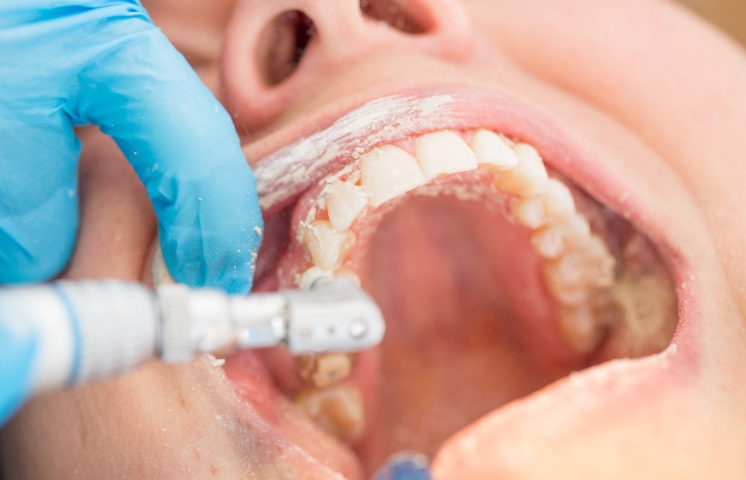How Dental Exams Can Detect Issues Before They Become Serious?

When was your last dental exam?
If you’re unsure, it might be time to schedule one. Dental exams are more than just routine check-ups—they are a crucial part of preventive care. By spotting potential problems early, dentists can help you avoid painful treatments down the road.
From cavities to gum disease, early detection can make all the difference in keeping your smile healthy.
Many dental issues start small and show little to no symptoms at first. But with regular exams, your dentist can catch these hidden problems before they worsen.
The good news?
A quick visit could save you from future discomfort, costly procedures, and even protect your overall health. Let’s explore why regular dental exams matter and how they help detect issues before they become serious.
How Dental Exams Work: What Dentists Look For?
Dental exams go beyond just checking for cavities. During a routine exam, your dentist thoroughly examines your entire mouth, looking for signs of various oral health issues that may not be visible to the untrained eye. These exams play a critical role in keeping your teeth and gums healthy, and they help catch potential problems early.
Here’s what happens during a typical dental exam:
- Teeth inspection: Dentists carefully check each tooth for signs of decay, cracks, or wear that could indicate underlying problems.
- Gum health: Dentists examine your gums for signs of gum disease, including redness, swelling, or bleeding.
- Oral cancer screening: Your dentist checks your lips, tongue, and throat for abnormalities that could suggest oral cancer.
- Bite alignment: Dentists assess how your teeth fit together and look for issues with your bite that could lead to discomfort or jaw problems.
- X-rays: Depending on your needs, X-rays may be used to detect problems beneath the surface, such as infections or bone loss.
Regular dental exams and cleanings in Loomis help identify oral health issues before they become severe, ensuring your smile stays healthy.
Detecting Early Signs of Tooth Decay
Cavities often start small, without causing pain or visible damage. That’s why regular dental exams are key to catching tooth decay early. Dentists use specialized tools to check for soft spots or discoloration that signal early decay. By identifying cavities before they progress, you can avoid more invasive treatments like root canals or extractions.
Here’s how dental exams help spot decay early:
- Visual inspection: Dentists can spot discoloration or cracks on the surface of the teeth that might indicate decay.
- Probing for soft spots: Dentists use tools to check for soft areas in the enamel that suggest decay has started.
- Fluoride application: If decay is detected early, fluoride treatments can strengthen the enamel and reverse early decay.
- Early treatment: Small cavities can be treated with simple fillings, preventing the need for more complex dental work later on.
Spotting Gum Disease in Its Early Stages
Gum disease often begins without any noticeable pain or discomfort, making regular dental exams crucial for catching it early. Gingivitis, the mildest form of gum disease, can be reversed with proper care, but it can progress to periodontitis if left untreated. During an exam, your dentist checks your gums for inflammation and bleeding—early signs of trouble.
Here’s how dentists detect gum disease:
- Gum probing: Dentists use a special tool to measure the depth of the pockets around your teeth, which can indicate gum health.
- Checking for bleeding: If your gums bleed easily during cleaning, it’s often an early sign of gum disease.
- Looking for inflammation: Swollen, red, or tender gums are indicators of early-stage gingivitis.
- Bone health assessment: In more advanced cases, dentists check for bone loss, which can result from untreated periodontitis.
Identifying Potential Oral Cancer
Oral cancer can develop silently, showing no obvious symptoms until it’s too late. That’s why dentists perform routine oral cancer screenings during exams. Early detection plays a critical role in increasing the chances of successful treatment and recovery.
Here’s how dental exams screen for oral cancer:
- Visual inspection: Dentists check your mouth, throat, and tongue for any unusual lesions, lumps, or discoloration.
- Checking lymph nodes: Your dentist may feel your neck and jaw area to detect swollen lymph nodes, which can be a sign of infection or cancer.
- Spotting white or red patches: Abnormal patches in the mouth can indicate precancerous conditions that need further examination.
- Referrals if needed: If anything suspicious is found, your dentist will refer you to a specialist for a biopsy or further testing.
Finding Problems Beyond the Teeth
Dental exams don’t just focus on your teeth and gums. Your dentist also looks for issues that could affect other areas of your oral and overall health, like jaw problems, bite issues, or TMJ disorders. These exams help identify oral health issues that might cause discomfort or lead to more serious complications if left untreated.
Here’s what dentists check for beyond your teeth:
- TMJ disorders: Dentists look for signs of jaw pain, clicking, or difficulty chewing, which may indicate a temporomandibular joint disorder.
- Bite misalignment: Uneven bites can lead to tooth wear, headaches, or even jaw strain if not addressed.
- Teeth grinding (bruxism): Dentists examine your teeth for signs of grinding, which can wear down enamel and cause other dental problems.
- Sleep apnea indicators: In some cases, a dental exam can reveal signs of sleep apnea, such as a narrow airway or teeth grinding, prompting further investigation.
The Role of X-Rays in Detecting Hidden Issues
While visual exams are important, not all dental problems are visible to the naked eye. X-rays play a crucial role in detecting issues that lie beneath the surface, such as impacted teeth, bone loss, or cysts. Dentists use X-rays to get a full picture of your oral health and catch hidden problems early.
Here’s how X-rays help during dental exams:
- Detecting impacted teeth: X-rays can reveal teeth that are stuck in the gums, such as wisdom teeth, before they cause pain or infection.
- Spotting bone loss: X-rays show bone density and can detect loss of bone around the teeth, a sign of advanced gum disease.
- Identifying cysts or tumors: X-rays help spot abnormal growths or cysts in the jaw that could lead to complications if untreated.
- Tracking tooth development: In children and teens, X-rays monitor how teeth are growing, ensuring they align properly.
Dental exams do more than just clean your teeth; they are essential for detecting hidden problems before they become serious. From catching early decay to spotting signs of gum disease or oral cancer, regular exams help safeguard your overall health. Don’t wait for symptoms to appear—schedule your next check-up today to stay ahead of potential issues. Ready to prioritize your oral health? Contact Discover Dental Rocklin to book your exam and keep your smile in top shape!




